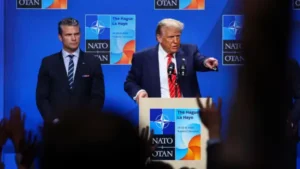Middle East Conflict Market Impact: Scenarios Traders Must Watch
Tensions between Israel and Iran have reignited, and traders worldwide are asking: how will this affect market direction? The Middle East conflict market impact depends heavily on how the situation evolves—from diplomacy to all-out war. At TraderInsight, we break down the implications of five possible outcomes and what they mean for your trading strategy.
Scenario 1: Ceasefire or Diplomatic De-escalation
A de-escalation in hostilities would likely have a calming effect on global risk assets. Equities would rally, oil would pull back sharply, and defense contractors might retrace recent gains. A peaceful resolution limits the Middle East conflict market impact and restores appetite for risk-on trades. Look for bullish setups in tech, travel, and emerging markets.
Scenario 2: Escalation into Open Conflict
If fighting intensifies, expect a spike in oil prices and a global risk-off response. The Middle East conflict market impact would include a surge in volatility (VIX), aggressive rotation into safe havens like gold and treasuries, and possible bear flags forming across tech. Watch for oil to test $90+ if major energy infrastructure or shipping lanes are disrupted.
Scenario 3: Ongoing Stalemate
In a drawn-out stalemate, markets will likely chop sideways. Oil stays elevated. Risk premiums remain priced into the market, but no breakout momentum emerges. The Middle East conflict market impact here is more subtle—ideal for mean-reverting intraday setups and short-term scalps as traders digest headline risk in real time.
Scenario 4: Effective Israeli Strikes on Iran’s Nuclear Program
If Israel’s targeted strikes were as successful as former President Trump claimed, the market might interpret this as a removal of long-term risk. Oil would likely spike then normalize, equities could regain footing, and the Middle East conflict market impact would fade quickly—assuming there’s no counterattack. Look for tactical long entries on weakness.
Scenario 5: Limited, Ineffective Strikes (as suggested by DoD)
Should reports of symbolic or minimal damage prove accurate, expect a more prolonged period of uncertainty. Oil remains strong, defense sector continues higher, and volatility lingers. This version of the Middle East conflict market impact fuels concern over broader regional escalation and unresolved nuclear ambitions.
Conclusion: Trade the Reaction, Not the Headline
Uncertainty is the enemy of steady market trends, and geopolitical instability can create sharp, unpredictable swings. Regardless of the scenario, it’s the market’s reaction—not the news itself—that creates opportunity. At TraderInsight, we’ll keep dissecting the Middle East conflict market impact and helping you find setups that align with real-time sentiment.
Join us each morning in the War Room for strategy sessions that turn breaking news into trading edge.

